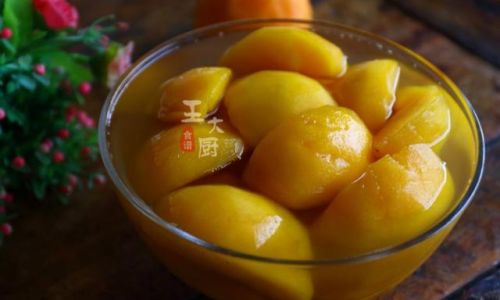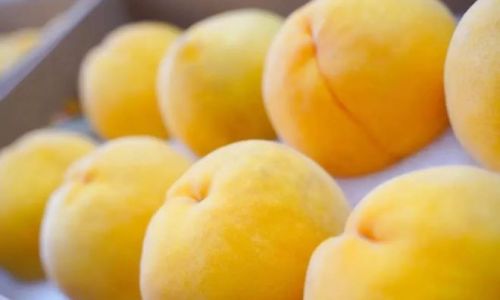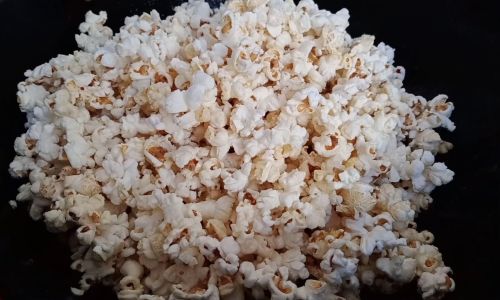Introduction
The yellow peach, with its velvety skin and juicy, golden flesh, is a beloved summer fruit enjoyed across the globe. Its sweet-tart flavor and aromatic scent make it a staple in pies, jams, salads, and fresh dishes. Yet, for many, the act of preparing a peach sparks a simple but persistent question: Should you peel it before eating? This query, seemingly straightforward, opens a doorway to discussions about nutrition, culinary traditions, food safety, and personal preference. While some advocates of the peel praise its fiber content and antioxidants, others argue that the fuzzy texture or pesticide residues warrant removal. This article delves into the nuances of this debate, exploring the scientific, cultural, and practical dimensions of consuming yellow peaches with or without their skin. By examining nutritional data, culinary applications, safety concerns, and expert opinions, we aim to equip readers with the knowledge to decide whether peeling aligns with their health goals, taste preferences, or cultural practices.
The Nutritional Profile: Skin vs. Flesh
To understand the peeling debate, one must first analyze the nutritional differences between a peach’s skin and its flesh. The skin of a yellow peach is not merely a protective layer but a biological powerhouse packed with beneficial compounds.
Dietary Fiber
The skin is a significant source of dietary fiber, which aids digestion, promotes satiety, and helps regulate blood sugar levels. A medium-sized yellow peach (approximately 150 grams) contains roughly 2 grams of fiber, with the skin contributing up to 40% of this total. Fiber also supports gut health by feeding beneficial bacteria, making the skin a valuable asset for those seeking digestive balance.
Antioxidants
Peaches, like many brightly colored fruits, derive their health benefits from antioxidants such as vitamin C, beta-carotene, and polyphenols. The skin, being directly exposed to sunlight, synthesizes higher concentrations of these compounds to protect against environmental stressors. For instance, chlorogenic acid, a polyphenol abundant in peach skin, has been linked to reduced inflammation and improved heart health.
Vitamins and Minerals
While the flesh is rich in vitamins A and C, the skin retains marginally higher levels of these nutrients. Vitamin A, crucial for eye health and immune function, is more concentrated in the skin, as is vitamin C, which bolsters collagen production and skin integrity. Additionally, the skin contains trace minerals like potassium and magnesium, which support nerve and muscle function.

Caloric and Sugar Content
For those monitoring calorie intake, the skin adds negligible calories—approximately 5–10 calories per peach. However, the flesh contains natural sugars (fructose), which contribute to the fruit’s sweetness. Peeling does not significantly alter the sugar content but may reduce the overall nutritional density.
The Verdict on Nutrition
From a purely nutritional standpoint, retaining the skin amplifies the fruit’s health benefits. However, individuals with digestive sensitivities, such as irritable bowel syndrome (IBS), may find the skin’s fiber content irritating. In such cases, peeling could alleviate discomfort without sacrificing most vitamins and minerals, as the flesh remains nutrient-rich.
Culinary Applications: Texture, Flavor, and Versatility
The decision to peel a yellow peach often hinges on its culinary use. The skin’s texture and flavor profile can enhance or detract from a dish, depending on preparation.
Raw Consumption
When eaten fresh, the skin’s texture is a polarizing factor. Some adore the slight fuzziness as a sensory contrast to the tender flesh, while others find it gritty or off-putting. For smoothies, salsas, or salads, leaving the skin intact can add visual appeal and a hint of tartness. However, for delicate dishes like peach sorbet or tart fillings, peeling ensures a silky-smooth consistency.
Cooking and Baking
High-heat cooking methods, such as grilling or roasting, soften the skin, rendering it edible and even caramelized. In pies or cobblers, unpeeled peaches can add depth, though some bakers prefer peeling to prevent toughness. Jams and preserves often benefit from peeled fruit to achieve a smoother spread.
Preservation
Canning or freezing peaches with the skin on may result in a chewier texture post-preservation. Peeling before preservation is thus common in commercial and homemade products alike.
Cultural Preferences
Culinary traditions also shape peeling habits. In Mediterranean cuisines, peaches are frequently consumed skin-on, celebrated for their rustic charm. Conversely, in some Asian desserts, peeling is standard to achieve a pristine aesthetic.

Safety Concerns: Pesticides and Pathogens
A critical consideration in the peeling debate is food safety. Conventionally grown peaches often rank high on pesticide residue lists, prompting concerns about consuming the skin.
Pesticide Exposure
The Environmental Working Group’s annual “Dirty Dozen” report frequently includes peaches due to their thin skin, which absorbs pesticides more readily than thicker-skinned fruits. Organic peaches, while pricier, minimize this risk. For conventional varieties, washing under running water or using a produce cleaner can reduce residues, though it may not eliminate them entirely.
Bacterial Contamination
The skin’s porous surface can harbor bacteria like Salmonella or E. coli, though such risks are rare in properly handled produce. Vulnerable populations, such as pregnant women, young children, or the immunocompromised, may opt to peel peaches as a precaution.
Mitigating Risks
For those unwilling to forgo the skin’s benefits, purchasing organic peaches or growing them at home (if feasible) offers peace of mind. Additionally, scrubbing the skin gently with a vegetable brush can physically remove residues without compromising nutrients.
Cultural and Historical Perspectives
The act of peeling fruit often carries cultural significance. In ancient China, peaches symbolized immortality, and their consumption was steeped in ritual. The skin was rarely discarded, as it was believed to contain spiritual essence. Similarly, in European folklore, peaches were associated with fertility, and their preparation varied by region—peeled for aristocratic feasts, skin-on for peasant meals.
Modern culinary trends reflect this diversity. In the United States, peeling peaches for pies is a hallmark of Southern hospitality, while in Italy, pesche alla piemontese (peaches stuffed with amaretti cookies) are served skin-on as a rustic dessert.
Expert Opinions: Dietitians and Chefs Weigh In
The peeling debate extends to professionals in nutrition and gastronomy.

Dietitians’ Stance
Most registered dietitians advocate for consuming the skin to maximize fiber and antioxidant intake. However, they acknowledge that individual needs matter. “For someone with a sensitive gut, peeling might be necessary,” notes nutritionist Dr. Elena Thompson. “But for the average person, the skin’s benefits outweigh the risks.”
Chefs’ Preferences
Chefs often prioritize texture over nutrition. “In a galette, the skin adds a pleasant chew,” says pastry chef Marie Dubois. “But for a poached peach, peeling ensures elegance.” Some chefs even employ hybrid techniques, like blanching peaches to loosen the skin before partially removing it, balancing aesthetics and nutrition.
Practical Tips for Peeling (or Not Peeling)
For those undecided, here are actionable tips:
-
If Keeping the Skin:
- Choose organic or locally grown peaches.
- Wash thoroughly under cool water, scrubbing gently.
- Pair with creamy ingredients (e.g., yogurt, whipped cream) to offset texture.
-
If Peeling:
- Blanch peaches in boiling water for 30 seconds, then shock in ice water to loosen the skin.
- Use a paring knife for precision, especially for sliced applications.
- Save peels for infusing tea or composting.
Conclusion: A Matter of Choice
The question of whether to peel a yellow peach ultimately boils down to personal priorities. Nutritionally, the skin offers a wealth of benefits, but culinary, cultural, and safety concerns may tilt the scale toward peeling. By weighing factors like digestive health, recipe requirements, and pesticide awareness, individuals can make informed choices that align with their values. Whether enjoyed fuzz-side-up or polished to a golden sheen, the yellow peach remains a testament to nature’s ability to nourish, delight, and inspire debate. So next time you hold a ripe peach, savor it thoughtfully—and remember, there’s no wrong answer, only personal preference.





0 comments